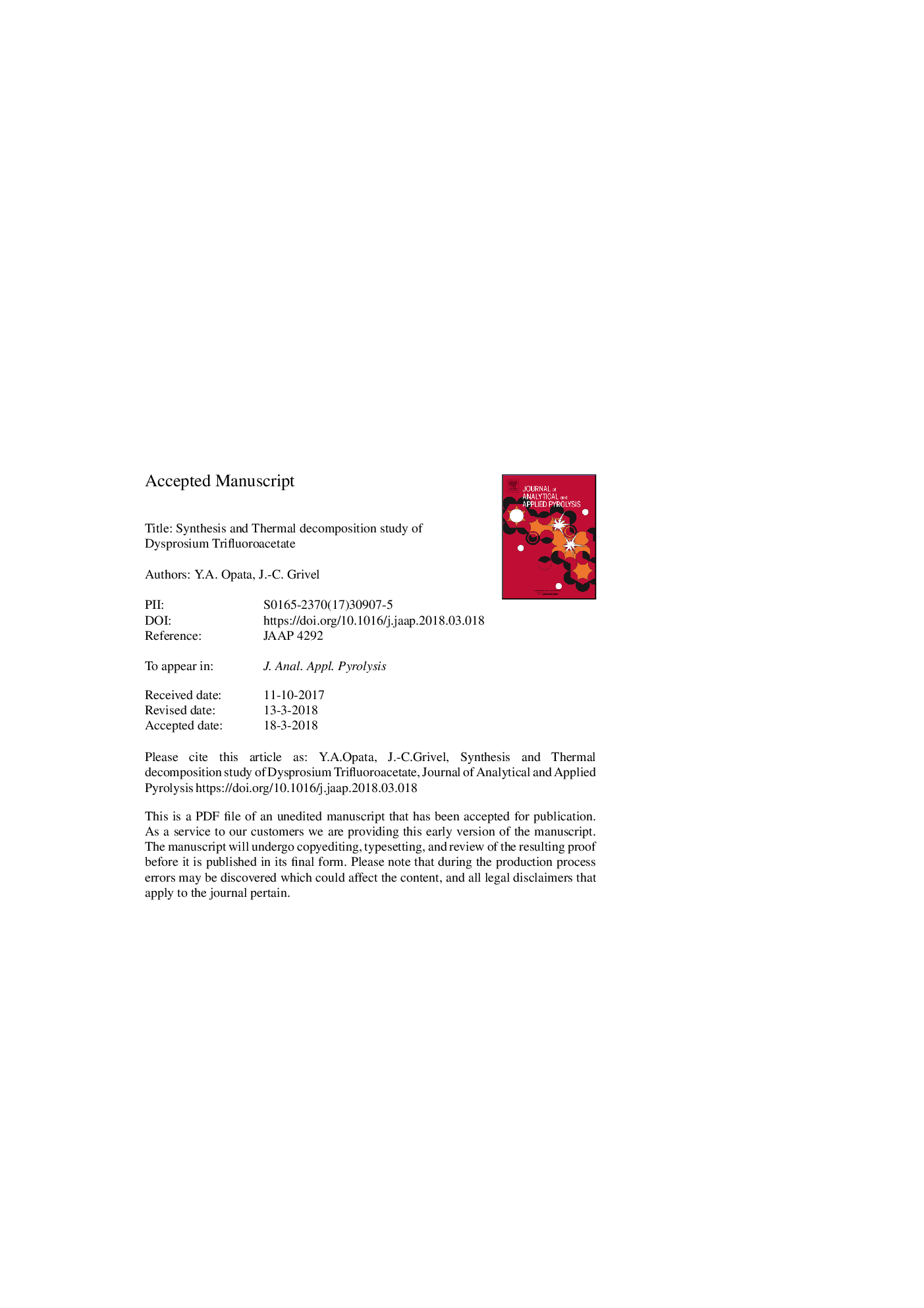| Article ID | Journal | Published Year | Pages | File Type |
|---|---|---|---|---|
| 7606271 | Journal of Analytical and Applied Pyrolysis | 2018 | 23 Pages |
Abstract
A study of the thermal decomposition process of dysprosium trifluoroacetate hydrate under flowing argon is presented. Thermogravimetry, differential thermal analysis, evolved gas analysis and ex-situ x-ray diffraction techniques have been employed in the investigation. Three main stages were identified: dehydration, decomposition and phase transformation from DyF3 to DyFO. The dehydration takes place in 2 steps and the decomposition also occurs in two stages. The observed residual mass demonstrated a discrepancy with the calculated value for DyF3 formation. Observations on quenched samples at temperatures just above the decomposition step and at 828â¯Â°C showed a variation in the sample color, being dark in the first case and rather bright at the higher quenching temperature. Based on this fact, we concluded that some carbon remains in the sample up to 800â¯Â°C. With the temperature reaching 1300â¯Â°C, a plateau is observed in the TG signal, which mass value agrees with the formation of DyFO as verified by the ex-situ x-ray data of quenched powder. Using the FTIR and MS spectra of released gases during the process and the TG data, a decomposition scheme is suggested.
Related Topics
Physical Sciences and Engineering
Chemistry
Analytical Chemistry
Authors
Y.A. Opata, J.-C. Grivel,
